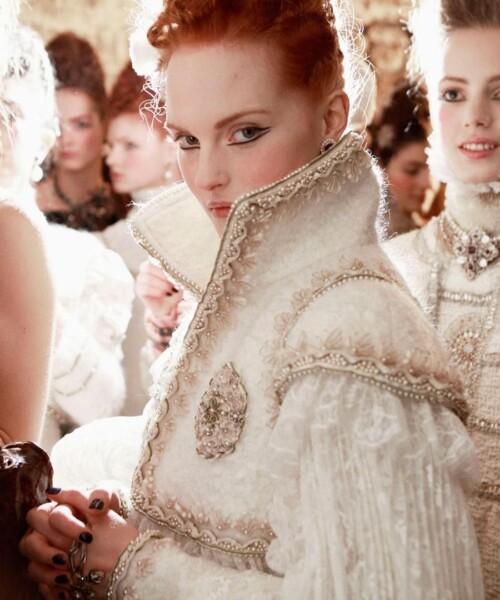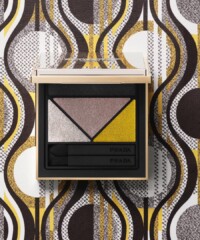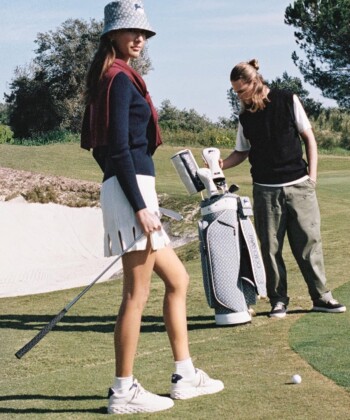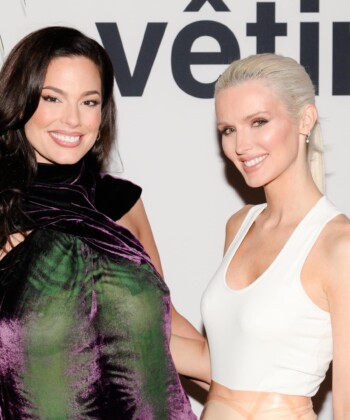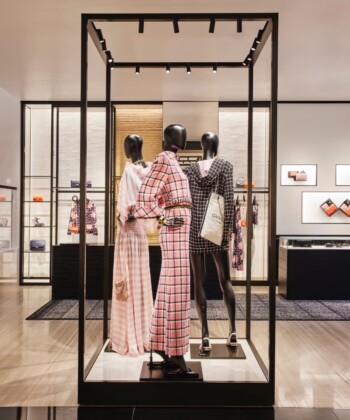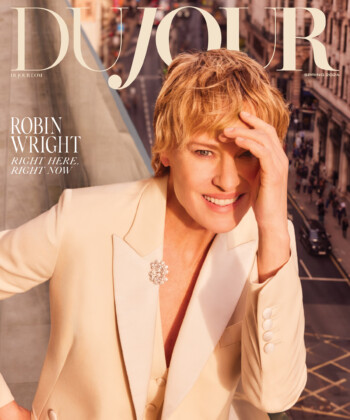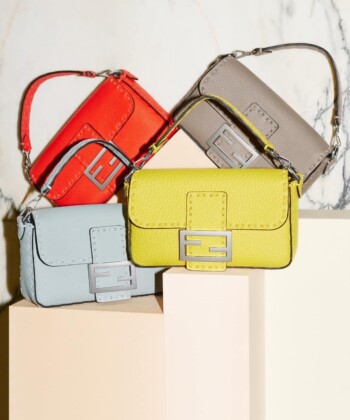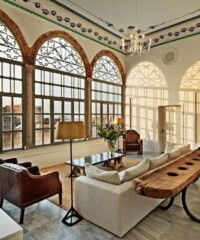 On Rue Cambon, a narrow street at the center of Paris’ 1st arronsissement and just steps from the splendors of Place Vendome, is Chanel’s flagship store, where Coco Chanel worked and entertained for 50 years, until her death in 1971. Today, the building remains fashion’s ultimate inner sanctum – the second floor houses the legendary haute couture fitting rooms – but not, perhaps, the heart of Chanel.
On Rue Cambon, a narrow street at the center of Paris’ 1st arronsissement and just steps from the splendors of Place Vendome, is Chanel’s flagship store, where Coco Chanel worked and entertained for 50 years, until her death in 1971. Today, the building remains fashion’s ultimate inner sanctum – the second floor houses the legendary haute couture fitting rooms – but not, perhaps, the heart of Chanel.
That, one might argue, lies just four miles to the northeast, amid the infinitely less salubrious surroundings of Pantin, a nondescript industrial suburb, where on the Rue du Cheval Blanc a new facility contains several of Chanel’s so-called Metier d’Arts companies, long-established enterprises that manufacture everything from buttons to the world’s finest fabric flowers.
For more than two decades, Chanel has been buying ailing companies vital to its couture business, conserving centuries-old practices that otherwise would have been irretrievably lost. The first purchase, in 1984, was Desrues, the button and costume-jewelry company. The milliner Michel and feather dresser Lemarié were added in 1996.
It was not until 1997, however, with the establishment of subsidiary company, Paraffection (meaning “for the love of”), that these acquisitions were addressed in a settled policy, with the expressed aim of preserving the heritage and skills of fashion artisan workshops. In 2002, the embroiderer Lesage and the Italian shoemaker Massaro were brought into the portfolio, followed by the gold- and silversmith Goossens in 2005 and the fabric-flower manufacturer Guillet in 2006. The embroiderer Montex was acquired in 2011. In many cases, these companies didn’t have the money, or they didn’t have the right people, to continue their businesses.
 In 2012, the house bought glovemaker Causse and the famous Scottish cashmere house, Barrie Knitwear. For 25 years, Barrie had supplied Chanel with knitwear, including its famous two-tone cardigans. But recent times have not been kind to the Scottish cashmere industry, which has been faced with relatively high labor costs and a flood of cheap imports from Asia. Additionally encumbered by pension debt, Barrie was in the midst of bankruptcy proceedings, which is why Karl Lagerfeld decided to step in, as he’d done so many times before. “They [the Wertheimers, Chanel’s owners] let me do whatever I like,” Lagerfeld says.
In 2012, the house bought glovemaker Causse and the famous Scottish cashmere house, Barrie Knitwear. For 25 years, Barrie had supplied Chanel with knitwear, including its famous two-tone cardigans. But recent times have not been kind to the Scottish cashmere industry, which has been faced with relatively high labor costs and a flood of cheap imports from Asia. Additionally encumbered by pension debt, Barrie was in the midst of bankruptcy proceedings, which is why Karl Lagerfeld decided to step in, as he’d done so many times before. “They [the Wertheimers, Chanel’s owners] let me do whatever I like,” Lagerfeld says.
The link between Scotland and France has historically been a strong one, and Coco Chanel herself had a personal tie to the country. During a 1920s affair with the fabulously wealthy Duke of Westminster, a young Chanel encountered Scottish woolen sweaters, Fair Isle knits, jersey yachting outfits, tartans and classic tweed jackets at the Duke’s Scottish sporting estates. She loved the comfort and unstructured informality of the clothes so much that she decided to adapt the cuts and proportions of men’s clothing by tailoring them to the female body. Handwoven woolen fabrics with natural irregularities became a staple of her collections beginning in 1924. By the 1950s, Chanel’s braided tweed suits had become iconic and she was creating her own tartans as well as matching berets and their Scottish equivalent, tams. “Chanel discovered tweeds and knits here,” Lagerfeld says.
 For 10 years, Lagerfeld has staged an annual extravaganza to highlight his Metier d’Arts acquisitions. To celebrate the new Scottish brands coming into the fold, the company hosted “Paris-Édimbourg” at Linlithgow palace, located 15 miles west of Edinburgh, an immensely grand skeleton of the original castle, which was the birthplace of Mary, Queen of Scots. The event was as dramatic as you’d imagine: a ruined Scottish castle at twilight, light snow falling, the skirl of bagpipes and huge flaming braziers illuminating the massive stone walls of a shadowy interior courtyard. it was rumored that Chanel had spent close to $2 million on the venue alone, and on every seat there was a muted plaid woolen blanket embellished with the house’s entwined double C’s and an embroidered thistle.
For 10 years, Lagerfeld has staged an annual extravaganza to highlight his Metier d’Arts acquisitions. To celebrate the new Scottish brands coming into the fold, the company hosted “Paris-Édimbourg” at Linlithgow palace, located 15 miles west of Edinburgh, an immensely grand skeleton of the original castle, which was the birthplace of Mary, Queen of Scots. The event was as dramatic as you’d imagine: a ruined Scottish castle at twilight, light snow falling, the skirl of bagpipes and huge flaming braziers illuminating the massive stone walls of a shadowy interior courtyard. it was rumored that Chanel had spent close to $2 million on the venue alone, and on every seat there was a muted plaid woolen blanket embellished with the house’s entwined double C’s and an embroidered thistle.
The undisputed star of the show was Lagerfeld’s muse, Stella Tennant, who still lives within the Scottish borders where she grew up. To the international fashion audience and a sprinkling of celebrities, Lagerfeld showed a collection marked by classic elements of tartan and tweed reinterpreted, of course, in entirely original ways. The clothes made repeated and explicit reference to Chanel’s other Metier d’Arts artisanal suppliers. For example, embroidery on chiffon by Lesage mimicked traditional Fair Isle knitwear patterns, while Lemarié had produced sensational pheasant-feather neckpieces. And, of course, Barrie’s elongated cashmere cardigans were a showstopping highlight.
Afterward, I caught up with Lagerfeld to ask him about the genesis of his Scottish experiment and how it played into his goal to preserve fashion’s future (or at least Chanel’s). I suggest to him that conservation and fashion, with its obsession with novelty, are unlikely bedfellows, but he laughs.
“You can preserve things but make something different with them,” he says. “It’s not because we want to repeat things. We want to design new things but to employ the tradition and craftsmanship of the past. We’re not creating museums!”
 Still, while Lagerfeld’s love and admiration for traditional craftsmanship is transparent, he is also a shrewd businessman. The acquisition of companies like Barrie signals a policy of enlightened self-interest. Indeed, during our chat, he makes no effort to conceal the fact: “If you want to do haute couture, to do things that no-body else does, then you must have these companies,” he says. “If they disappear, you will disappear too.”
Still, while Lagerfeld’s love and admiration for traditional craftsmanship is transparent, he is also a shrewd businessman. The acquisition of companies like Barrie signals a policy of enlightened self-interest. Indeed, during our chat, he makes no effort to conceal the fact: “If you want to do haute couture, to do things that no-body else does, then you must have these companies,” he says. “If they disappear, you will disappear too.”
This is a sentiment echoed by the president of Chanel fashion, Bruno Pavlovsky, who notes that knitwear represents about 30 percent of the company’s ready-to-wear collections. “It is the second largest category after jackets. And knitwear is a growing business, given the casual nature of life today and the demand for ‘easy’ clothing. So this was not a vanity or a charity project, but a smart business venture,” he says.
To maintain its position within the industry, Chanel needs to have access to materials and accessories that cannot be readily duplicated. Potential Asian competitors enjoy cheap labor costs and can easily copy Chanel designs using inferior materials at a fraction of the cost. The acquisition of Metiers d’Arts companies is the way that Chanel intends to protect its market niche and to preserve its privileged status at the apex of the luxury market.
Before we part, I ask Lagerfeld if other acquisitions were to be expected. “I don’t foresee any right now,” he replies. “We have them all. There may be something in a few years, but now it is important to train a new generation of skilled seamstresses. I always quote my favorite saying from Goethe, his famous motto: ‘Build a better future by expanding on elements of the past.’ That’s what we have to do.”


























